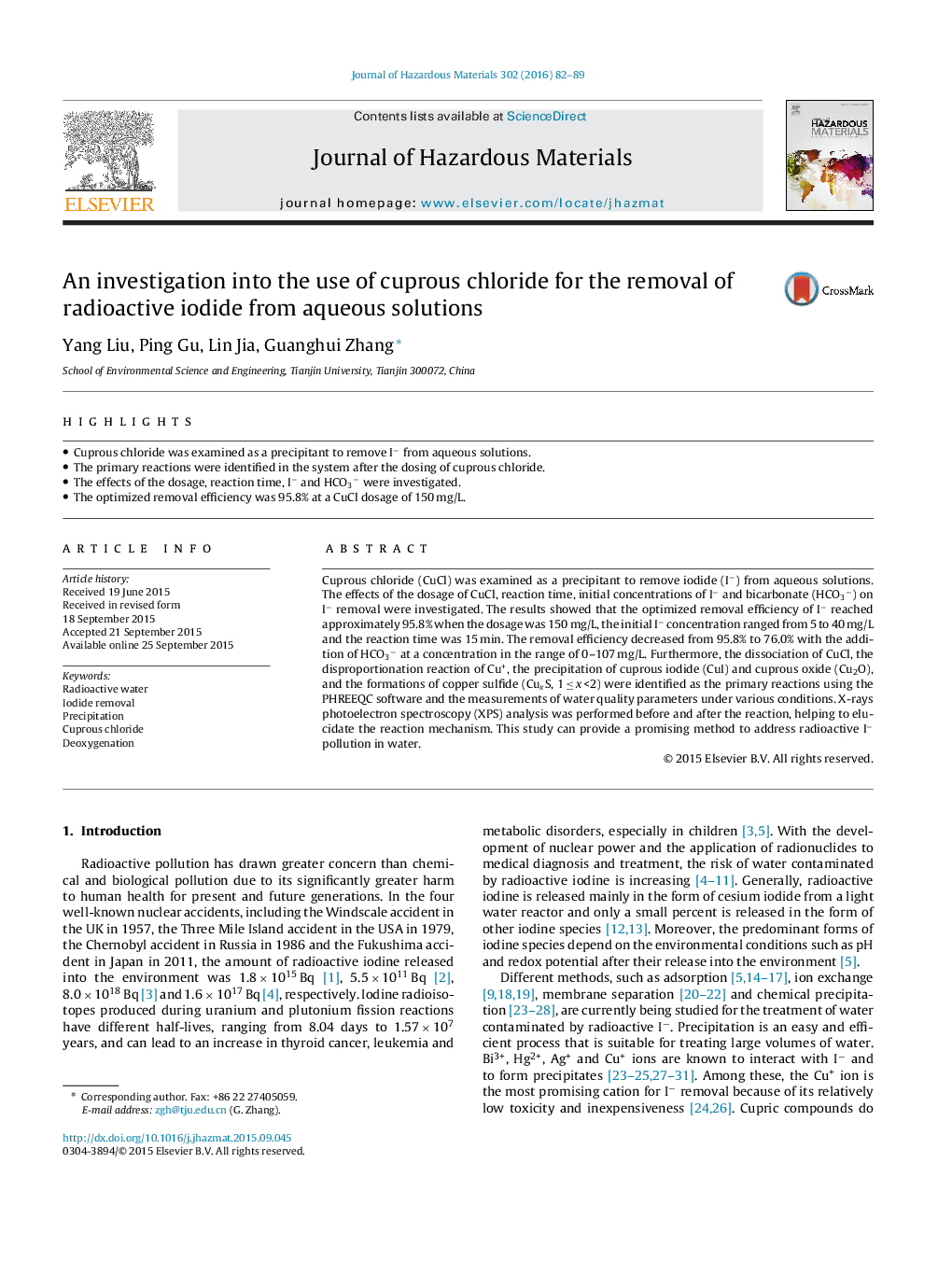| Article ID | Journal | Published Year | Pages | File Type |
|---|---|---|---|---|
| 575597 | Journal of Hazardous Materials | 2016 | 8 Pages |
Abstract
Cuprous chloride (CuCl) was examined as a precipitant to remove iodide (Iâ) from aqueous solutions. The effects of the dosage of CuCl, reaction time, initial concentrations of Iâ and bicarbonate (HCO3â) on Iâ removal were investigated. The results showed that the optimized removal efficiency of Iâ reached approximately 95.8% when the dosage was 150 mg/L, the initial Iâ concentration ranged from 5 to 40 mg/L and the reaction time was 15 min. The removal efficiency decreased from 95.8% to 76.0% with the addition of HCO3â at a concentration in the range of 0-107 mg/L. Furthermore, the dissociation of CuCl, the disproportionation reaction of Cu+, the precipitation of cuprous iodide (CuI) and cuprous oxide (Cu2O), and the formations of copper sulfide (CuxS, 1 â¤Â x <2) were identified as the primary reactions using the PHREEQC software and the measurements of water quality parameters under various conditions. X-rays photoelectron spectroscopy (XPS) analysis was performed before and after the reaction, helping to elucidate the reaction mechanism. This study can provide a promising method to address radioactive Iâ pollution in water.
Related Topics
Physical Sciences and Engineering
Chemical Engineering
Chemical Health and Safety
Authors
Yang Liu, Ping Gu, Lin Jia, Guanghui Zhang,
